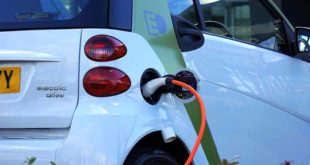Imagine traveling the entirety of Australia in a lightweight vehicle that occasionally uses a kite for propulsion. A kite! Normally, trips across the rugged terrain are done in heavy duty vehicles with an abundance of spare parts and gasoline. Dirk Gion and Stefan Simmerer had a different plan.
The Wind Explorer—which is a lightweight, kite-assisted electric automobile on bicycle tires—drove 3,107 miles across the breadth of Australia in an incredible 18 days. As impressive as that is, it pales when you learn they used only $15 worth of electricity for the entire trip. The journey set three world records:
· The first continental crossing by a wind-powered vehicle
· The longest distance ever covered by a wind powered vehicle
· The trek also picked up a world record for the most distance covered by such a vehicle in 36 hours
The duo traveled over 1,400 miles on wind-generated electricity alone, and managed another 300 by kite.
The vehicle, which is an open roadster-style car, seats two people and weighs a mere 441 pounds. This total weight includes its battery pack and wind turbine. The car itself is a unique design of carbon fiber sitting over a durable-yet-lightweight aluminum frame. The team opted for bicycle tires because they reduce any rolling friction and resistance.
The car’s battery pack was comprised of a 4-block, 14-cell, 8 kilowatt lithium-ion battery. It can be fully charged, from completely drained, overnight with the wind turbine that sits on a 20-foot telescopic bamboo pole. It has a maximum power of 1,000 watts. Fully charged, the vehicle has a range of about 124 miles.
The team did some test run around Perth in late January, and officially got underway from Albany, which is the southernmost tip of Australia, on January 26th. The first 500 miles was all grid-powered but the stretch of the Nullarbor Plain allowed for kite propulsion. This is a serious two-person operation, with one driving and the other maneuvering a large parasail-type kite.
The trip wasn’t without problems. The car suffered several flat tires and a handful of blown motors. Even with all that, the trip finished in Sidney on Valentine’s Day. Gion and Simmerer managed a top speed of 50 mph, and the best single-day stretch covered more than 305 miles.
The success of their journey will hopefully draw the attention of consumers and energy companies alike towards the possibility of harnessing wind power in new and creative ways.
guest post by Jennifer
 Alternative Energy HQ solar power for homes, wind energy, and bio fuel issues
Alternative Energy HQ solar power for homes, wind energy, and bio fuel issues






